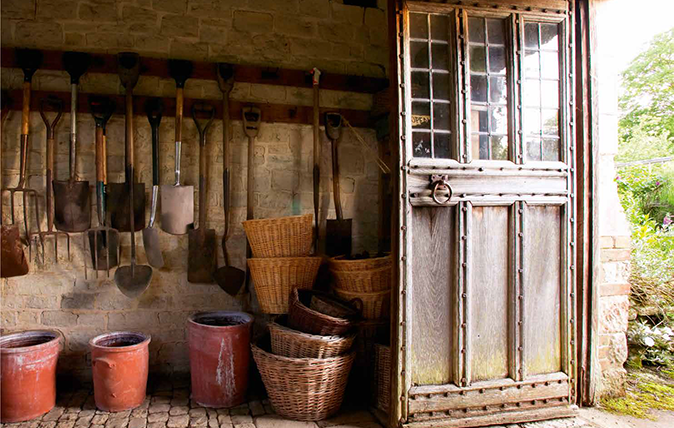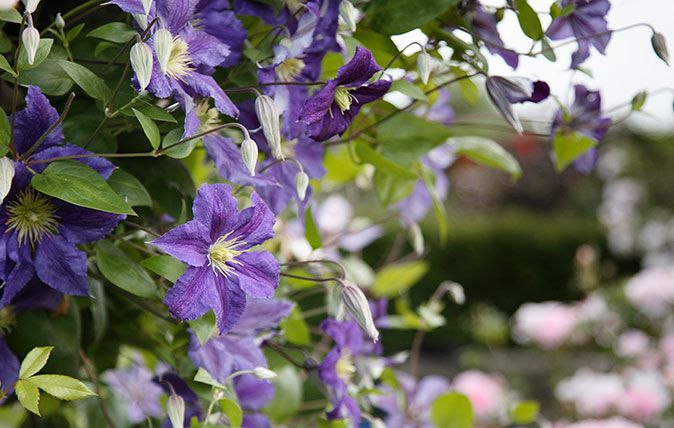How to grow plants that you really shouldn't be able to grow in England
Take a chance on surprising survivors advises Steven Desmond.


If there is one thing that distinguishes British gardens from those in other countries, it’s the obvious interest in plant content above any other consideration. There are good reasons for this. Given our variable but reasonable climate, it’s no wonder we are inclined to try plants the book says won’t grow where we live.
This knowledge is always gradually changing. Britain is full of handsome camellia glasshouses of the early 19th century, all built before it was realised that camellias are perfectly hardy in our climate. On the other hand, I remember growing Diascia rigescens, a pretty pink perennial from southern Africa, and thinking this was the future, but it became apparent that it objected to our winters. As nothing beats personal experience, let me wave a few examples that show how wrong the books can be.
For many years, I worked for a horticultural college in Durham that was well known for its spectacular frost pocket, to the extent that the Met Office has twice published special reports on its fearsome powers. Let it not be thought, then, that I write regarding some cossetted spot.
On one south-facing brick wall, we grew Eccremocarpus scaber, the Chilean glory flower, which standard reference works inform me will just about grow in sheltered corners of gardens in the south of England. Well, it grew and flowered magnificently in Durham and came back stronger each year, so it’s obviously hardier than generally supposed.
Other sites in Durham taught me lessons, too. I remember finding a perfect mature specimen of Pittosporum tenuifolium, that elegant wavy-leaved New Zealand evergreen, in the back garden of a house in South Street famed for its fabulous view of the west front of Durham Cathedral. It’s seldom seen in the North-East, but this was the equal of any in the balmy South-West, evidence that, with a little care and thoughtful placement, our plant menu might be much longer.

A little further south, but in the same climatic band, I worked at another such college near York, where the view into the principal’s office window was cunningly obscured by a big bush of Poncirus trifoliata. It was the very picture of health and vigour, yet no textbooks would advise planting the Japanese bitter orange, a citrus in all but name, on a glacial moraine in the Vale of York. It has a magnificent structure of evergreen thorny shoots, adorned in spring with large, sweetly scented white flowers, followed by a crop of golfball-sized oranges that make excellent marmalade. In the right position, I’m sure it would do well in most British gardens.
Not far away, I once worked in a lovely garden at Nun Monkton, up the road towards Harrogate. The soil was a brick-making clay. On the lawn in front of the big house was, and is, a magnificent specimen of Sophora japonica, a big, broad-crowned deciduous tree laden in September with white pendulous bunches of pea flowers. I’ve never seen another one outside a botanical garden in this country (cue an avalanche of contradictory letters) and frankly wonder why not.
Exquisite houses, the beauty of Nature, and how to get the most from your life, straight to your inbox.
My present garden is in a different world, shallow chalk in Hampshire, but 600ft up, so pretty fresh at times. Three years ago, I cautiously placed the ‘common’ myrtle, Myrtus communis, in a west-facing spot backed by a mature conifer. It’s been clobbered by the frost a few times, but always made a good recovery and is now beginning to look handsomely mature. In fact, it’s doing so well I wonder whether I should have pushed the boat out a bit further and planted its elegant cousin Luma apiculata (which we used to call Myrtus luma) instead. The search is now on for the right spot.
If there are certain general rules to be drawn from all this, the following might do for a start. Many doubtful plants will gain from the shelter of a grove of established trees and shrubs, where frost seldom penetrates. A south-facing wall will encourage the ripening of wood on sun-worshippers, which will enable them to flower and fruit. And protection from the morning sun will allow frosted tissues to thaw gradually, so that a westerly aspect will always be a kindness to plants of a delicate disposition.
These are broad generalisations and each case will be different, but the message is clear: stop wondering and get on with it. Fortune favours the bold!
Steven Desmond is a freelance landscape consultant, specialising in the conservation of historic gardens

Credit: Claire TAKACS/Alamy
The 10 tools no gardener should be without – and which ones to buy
Steven Desmond on the garden tools we all need, and how to choose ones which will last you a lifetime.

Credit: Leena Robinson / Alamy
How to grow your own peaches: Five steps to peachy perfection
Steven Desmond explains how you can produce these delicious, luxurious fruits on your own soil.

How to choose the perfect Clematis – and how to help it flourish
Steven Desmond gives his tips on how to look after clematis, the beautiful climbing plant whose flowers explode in spring.
Country Life is unlike any other magazine: the only glossy weekly on the newsstand and the only magazine that has been guest-edited by His Majesty The King not once, but twice. It is a celebration of modern rural life and all its diverse joys and pleasures — that was first published in Queen Victoria's Diamond Jubilee year. Our eclectic mixture of witty and informative content — from the most up-to-date property news and commentary and a coveted glimpse inside some of the UK's best houses and gardens, to gardening, the arts and interior design, written by experts in their field — still cannot be found in print or online, anywhere else.
